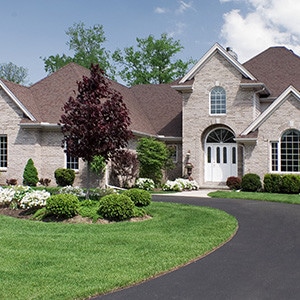
Should I Install Artificial Grass as a Groundcover in My Yard?
— February 24, 2015Choosing a groundcover material for your yard is one of the most exciting and important considerations when installing (or renovating) an outdoor area of your home. After all, the groundcover will in most cases receive the most activity, and, depending on the yard, will also be the most visible to passers-by. For many homeowners, artificial grass is an ideal choice.
Artificial grass products have made significant technological advancements in recent years. They are becoming extremely popular all around the country for a variety of reasons. Indeed, artificial grass isn’t for everyone, but for some it can be very beneficial.
Why do homeowners install artificial grass?
The most common reason homeowners decide to install artificial grass is that it’s low maintenance. Spending less money on maintenance equates to more money in the homeowner’s pocketbook and more time to concentrate on other, more rewarding activities. Homeowners that fall into this category are often parents or busy professionals. Parents like artificial grass in particular because it precludes grass stains, grass clippings and mud from getting tracked into the house by children at play.
Artificial grass is also good for areas that have difficulty growing real grass. If your yard is in a low-light or poorly draining area (or in any area where real grass struggles to grow), installing artificial grass is a convenient remedy for this problem. Artificial grass requires no cultivation and many are indistinguishable from real sod. Very often, it’s easier (and less expensive) to place artificial grass than to restructure the area to make it more conducive to grass growth.
Some homeowners have areas of their homes which are unused or which they would like to get more use from. Artificial grass is appropriate for such homeowners because it can functionalize unused and hard to access areas. Such homeowners will sometimes replace their gardened areas with artificial grass in order to accommodate recreational activities. This is most common among homeowners with children and pets or active lifestyles.
The environment is another consideration that many homeowners take into account when choosing to go artificial. In some areas, like in the Southwestern United States, saving water resources is just one of the environmental reasons that incite them to install artificial grass. Indeed, artificial grass demands very little water and prevents harmful substances like fertilizers and pesticides from overflowing and polluting other districts.
A no less important advantage of artificial grass is that it’s very durable and thus more able to withstand activities that other surfaces couldn’t endure. For instance, it is invulnerable to chlorine contamination, making it appropriate for installation around pools. And if you’re a pet owner, it is resistant to pet activities, such as digging, and won’t die or change color if your pet urinates on it.
What makes the artificial grass of today different from previous incarnations?
Unlike artificial grasses of the past, modern synthetic grass is very adaptable and can be cut to fit any residential landscape, whether it has curved lines, straight lines, or a combination of the two. Finally, many different colors and varieties exist on the market today. With such a range of selection, homeowners can easily find one that fits their aesthetic sensibility and the character of their yard.


Leave a reply